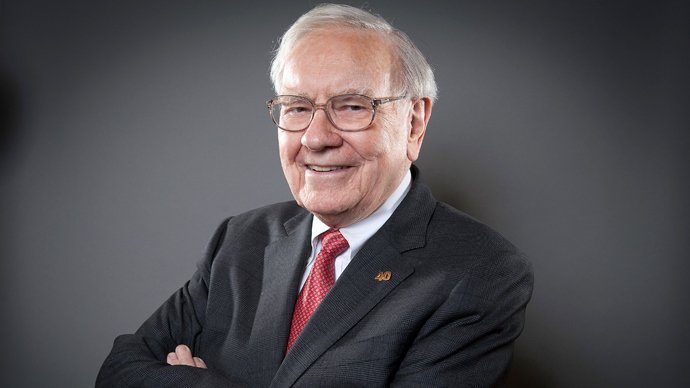Start with Why: The Heart of Mentorship in Leadership
Why do some leaders leave a legacy that echoes through generations, while others fade into obscurity? It’s not about their achievements or titles—it’s about their ability to inspire others to rise. I believe leadership isn’t about being in charge; it’s about taking care of those in your charge. In 2025, mentorship in leadership is the ultimate expression of this idea. It’s how you develop future leaders, not by telling them what to do, but by showing them why it matters.
Mentorship isn’t a task—it’s a purpose. It’s about planting seeds of growth, trust, and vision in others, so they can carry forward a legacy of impact. When you mentor with intention, you don’t just build a team—you build a movement. Let’s explore why mentorship in leadership is the key to developing future leaders, and I’ll share five ways to do it with purpose, inspired by the leaders who’ve mastered this art. Together, we’ll uncover how to leave a legacy that lasts.

The Why Behind Mentorship: Inspiring the Next Generation
Mentorship in leadership starts with a simple question: Why do you lead? If your answer is to create a better future, then mentorship is your path. It’s about developing future leaders who share your values and vision, ensuring your impact endures. A 2024 study by Gallup showed that employees with mentors are 45% more engaged and 30% more likely to aspire to leadership roles (Gallup).
When you mentor, you’re not just teaching skills—you’re showing others why their work matters. Think of a young employee who feels lost in their role. A mentor who says, “I believe in you, and here’s why your contribution changes lives,” can ignite a spark that turns them into a leader. Without mentorship, potential withers. But with it, you create a ripple effect of growth. Curious about building a legacy? Explore more in this guide on creating a lasting leadership legacy. Why do you want to develop future leaders?
The Modern Call for Mentorship
Let’s look at the world today. Gen Z, a growing force in the workplace, craves meaning—83% say they want mentors to guide their careers, according to a 2024 Deloitte survey (Deloitte). Hybrid work has made connection harder, and AI’s rise means leaders must guide others through change. In this landscape, mentorship in leadership isn’t optional—it’s essential. A 2023 McKinsey report found that companies with strong mentorship programs have 25% higher retention and 20% faster innovation (McKinsey).
The stakes are high. Without mentorship, organizations lose talent and stagnate. But when leaders mentor with purpose, they develop future leaders who can navigate uncertainty and drive progress. For more on today’s workplace, see how Gen Z is rewriting leadership rules.
Way 1: Inspire with Your Why
People don’t buy what you do—they buy why you do it. In mentorship, this means leading with your purpose. When you share why you lead—the values and beliefs that drive you—you inspire your mentees to find their own why, which is the foundation for developing future leaders.
Warren Buffett does this beautifully. He mentors by sharing his why: to build a world where integrity and long-term thinking win. His protégé, Ajit Jain, absorbed this, leading Berkshire Hathaway’s insurance arm to record profits, contributing to a $850 billion market value by 2023. Buffett’s why shaped Jain into a leader who carries his vision forward.
Your Move: Share your why with a mentee. Sit down and say, “I lead because I believe in creating opportunities for others—why do you want to lead?” Help them find their purpose. For more on leading with purpose, check out how to lead with integrity.

Way 2: See Their Potential Before They Do
Great leaders don’t just see people for who they are—they see who they can become. Mentorship in leadership is about believing in your mentee’s potential, even when they doubt themselves. This belief empowers them to grow into future leaders.
Indra Nooyi, former PepsiCo CEO, lived this principle. She saw potential in Ramon Laguarta, mentoring him to think strategically and globally. When she stepped down in 2018, Laguarta took over as CEO, leading PepsiCo to $86 billion in revenue by 2023. Nooyi’s belief in him created a leader who continued her legacy.
Your Move: Identify a team member with untapped potential. Tell them, “I see you leading this project one day—let’s work on your skills together.” Give them a small leadership role to start. For more on nurturing growth, explore leadership development strategies.
Way 3: Create a Circle of Safety
People don’t grow in fear—they grow in safety. Mentorship in leadership means creating a space where mentees can take risks, fail, and learn without judgment. When they feel safe, they’re free to develop into the leaders they’re meant to be.
Satya Nadella transformed Microsoft by creating this safety. He mentored his team to experiment with cloud computing, even after early failures. His trust led to Azure’s success, generating $60 billion by 2023 (Humans of Globe). Nadella’s safe space turned his team into innovators who now lead Microsoft’s future.
Your Move: Encourage your mentee to try something new—like leading a meeting—and assure them, “I’ve got your back, no matter what.” If they stumble, help them learn. For more on fostering trust, see empowering leadership.
Way 4: Open Doors to Opportunity
Leaders don’t just teach—they provide opportunities. Mentorship in leadership means using your influence to give mentees access to networks, projects, and experiences that help them grow into future leaders.
Oprah Winfrey is a mentor who opens doors. She gave Dr. Phil McGraw a platform on her show, mentoring him to communicate with impact. That opportunity launched Dr. Phil’s own show, reaching millions by 2023. Winfrey’s mentorship created a leader who extends her legacy of empowerment.
Your Move: Invite your mentee to a high-level meeting or introduce them to a key contact. Say, “I want you to learn from this experience.” This exposure builds their confidence. For more on creating opportunities, check building a lasting leadership legacy.

Way 5: Guide with Honest Feedback
Mentorship isn’t about coddling—it’s about truth. To develop future leaders, you must provide honest, constructive feedback that helps them grow. When you guide with clarity, you show them the path to leadership.
Anne Mulcahy, former Xerox CEO, used feedback to mentor her team during a crisis in the 2000s. She’d say, “You’re great at strategy, but let’s improve your communication.” Her honesty helped her team grow into leaders, turning Xerox around to $15 billion in revenue by 2009.
Your Move: After a mentee’s project, give balanced feedback: “You led that well, but here’s where you can improve.” Be specific and supportive. For more on feedback, explore giving constructive feedback.
Mentorship in Today’s World
In 2025, mentorship in leadership is urgent. AI demands new skills, hybrid work requires connection, and Gen Z seeks purpose. A 2024 Harvard Business Review study found that mentorship boosts innovation by 30% (https://hbr.org/2024/01/the-power-of-mentorship-in-leadership). When you develop future leaders, you ensure your organization thrives. For more on modern leadership, see emerging trends shaping leadership.
Leave a Legacy That Inspires
Mentorship in leadership isn’t about what you do—it’s about why you do it. Leaders like Buffett, Nooyi, Nadella, Winfrey, and Mulcahy show that inspiring with purpose, seeing potential, creating safety, opening doors, and guiding with feedback develop future leaders who carry your vision forward. In 2025, your legacy isn’t your title—it’s the leaders you inspire. Start with why, and watch your impact grow.
Begin mentoring today. Share your why with a team member and help them find theirs. Tell us how it goes in the comments, or dive into our leadership development resources for more inspiration. Let’s develop future leaders together!
“Great leaders don’t create followers—they inspire future leaders through mentorship.” – Jamaluddin Khan / Leadership Foundry 360




Pingback: How to Lead Hybrid Teams with High-Performance Results - Leadership Foundry
Pingback: Why Follow When You Can Lead? - Leadership Foundry